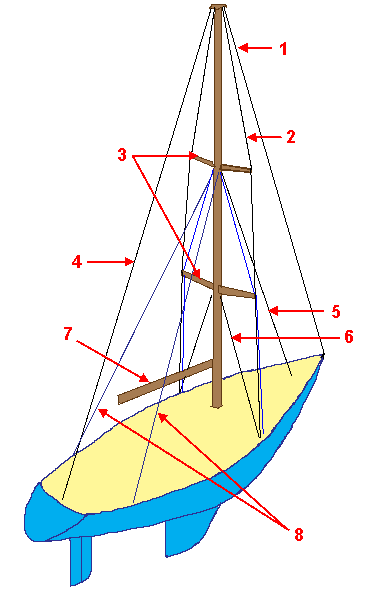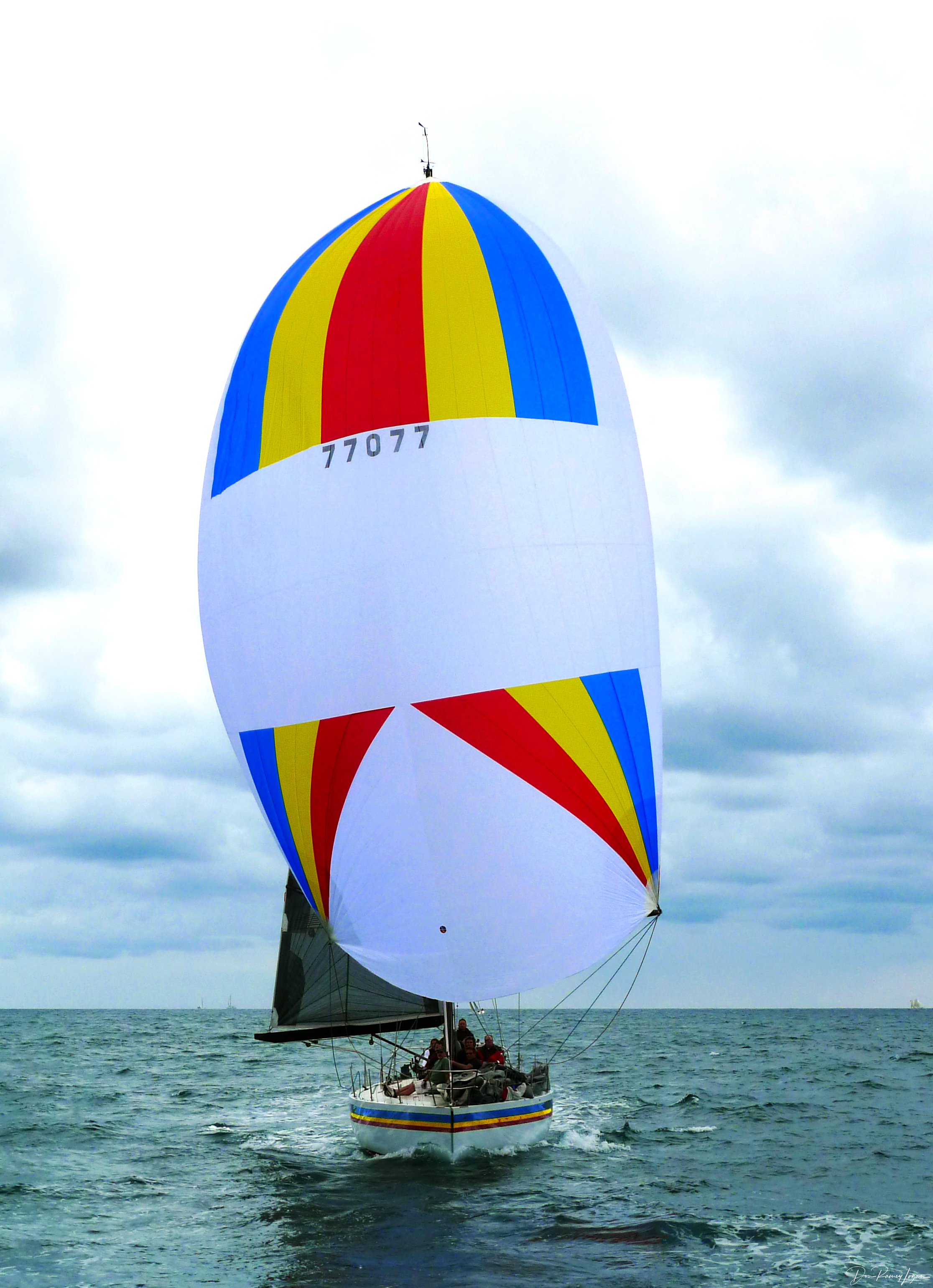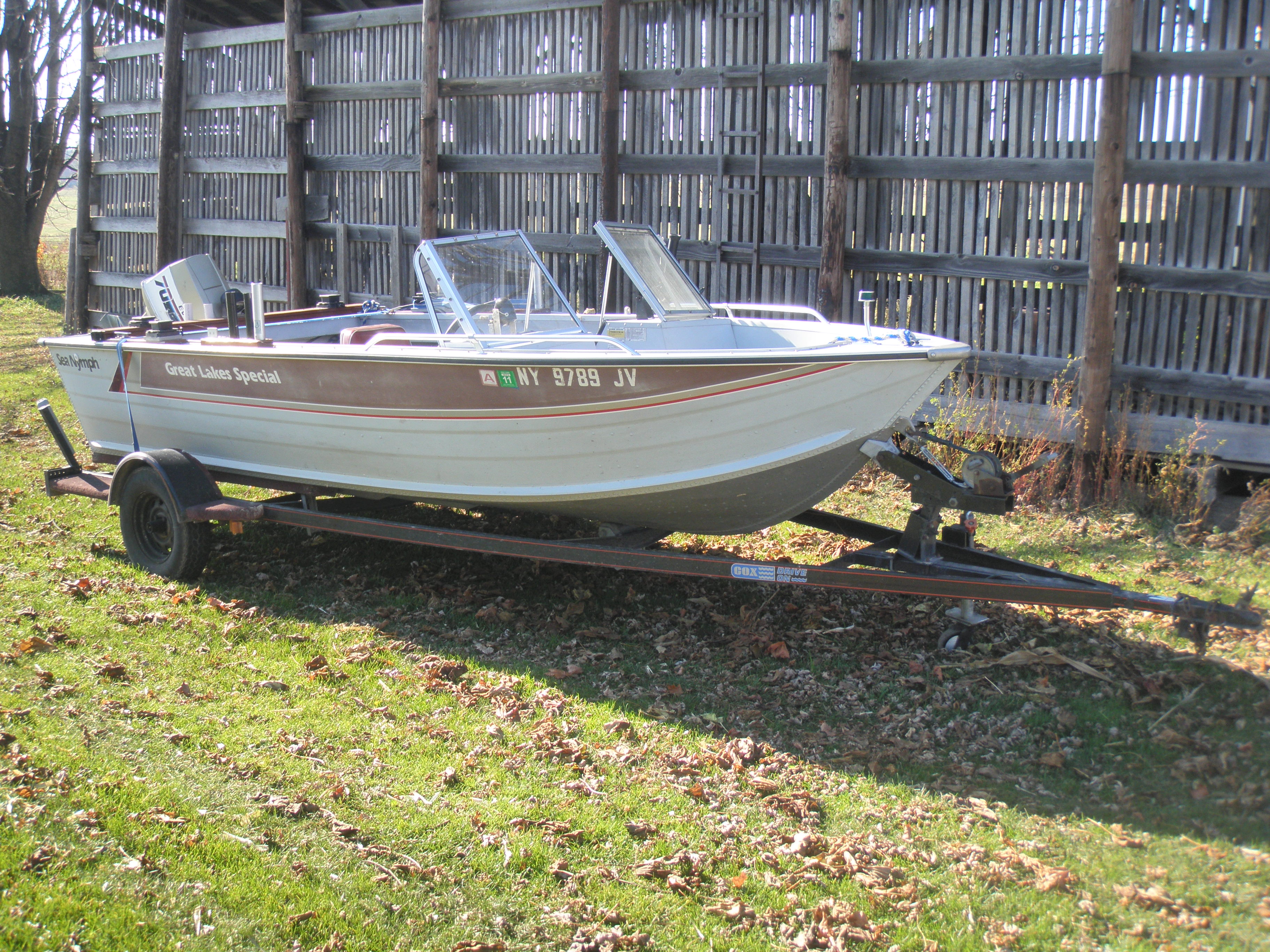|
RS Quest
The RS Quest is a British sailboat that was designed by Jo Richards as a sail trainer and day sailer. It was first built in 2015. Production The design has been built by RS Sailing in the United Kingdom, since September 2015 and remains in production. Design The boat was designed for the British Sea Cadets to replace their existing fleet of older boats and also as a family day sailer. The RS Quest is a recreational sailing dinghy, with the hull built predominantly of rotomoulded Comptec PE3 polyethylene. It has a fractional sloop rig with aluminum spars and wire standing rigging. The hull has a nearly- plumb stem, a vertical transom, a transom-hung aluminum rudder controlled by a tiller and a retractable glassfibre centreboard. It displaces and can carry of crew weight or four adults. The boat has a draft of with the centreboard extended. Retracting the centreboard allows operation in shallow water, beaching or ground transportation on a trailer. The boa ... [...More Info...] [...Related Items...] OR: [Wikipedia] [Google] [Baidu] |
Jo Richards (naval Architect)
Jo Richards may refer to: *Jo Richards (naval architect) of ''Laser Pico'' and other boats *Jo Richards, character in ''Boogie Woogie'' (film) *Jo Richards (gymnastics coach) of Allana Slater Allana Amy Slater (born 3 April 1984 in Perth, Western Australia) is a retired Australian artistic gymnast. The Australian senior all-around National Champion in 2000, 2003 and 2004 and a multiple medalist at the Commonwealth Games, Slater is ... See also * Jo-Anne Richards, South African journalist and author * Josephine Richards (other) * Joe Richards (other) {{hndis, Richards, Jo ... [...More Info...] [...Related Items...] OR: [Wikipedia] [Google] [Baidu] |
Standing Rigging
Standing rigging comprises the fixed lines, wires, or rods, which support each mast or bowsprit on a sailing vessel and reinforce those spars against wind loads transferred from the sails. This term is used in contrast to running rigging, which represents the moveable elements of rigging which adjust the position and shape of the sails. Historical development Early sailing vessels used rope of hemp or other fibers, which gave way to wire ropes of various types. Galvanized steel was common for the first half of the 20th century, continuing as an inexpensive option to its 1960s successor material—stainless steel cables and rods. In the late 20th Century, racing yachts adopted composite fiber lines for standing rigging, with the goal of reducing weight and windage aloft. Materials On modern yachts, standing rigging is often stainless steel wire, Nitronic-50 stainless steel rod or synthetic fiber. Semi-rigid stainless steel wire is by far the most common as it combines extre ... [...More Info...] [...Related Items...] OR: [Wikipedia] [Google] [Baidu] |
Dinghies
A dinghy is a type of small boat, often carried or towed by a larger vessel for use as a tender. Utility dinghies are usually rowboats or have an outboard motor. Some are rigged for sailing but they differ from sailing dinghies, which are designed first and foremost for sailing. A dinghy's main use is for transfers from larger boats, especially when the larger boat cannot dock at a suitably-sized port or marina. The term "dinghy towing" sometimes is used to refer to the practice of towing a car or other smaller vehicle behind a motorhome, by analogy to towing a dinghy behind a yacht. Etymology The term is a loanword from the Bengali ', Urdu ', and Hindi '. Types Dinghies usually range in length from about . Larger auxiliary vessels are generally called tenders, pinnaces or lifeboats. Folding and take-down multi-piece (nesting) dinghies are used where space is limited. Some newer dinghies have much greater buoyancy, giving them more carrying capacity than older b ... [...More Info...] [...Related Items...] OR: [Wikipedia] [Google] [Baidu] |
List Of Sailing Boat Types
The following is a partial list of sailboat types and sailing classes, including keelboats, dinghies and multihull ( catamarans and trimarans). Olympic classes World Sailing Classes Historically known as the IYRU (International Yacht Racing Union), the organization evolved into the ISAF (International Sailing Federation) in 1996, and as of December 2015 is now World Sailing. Dinghies Keelboats & yachts Multihulls Boards Radio-controlled Former World Sailing-classes Dinghies Keelboats & yachts Multihulls Boards Other classes and sailboat types Dinghies Keelboats & yachts Multihulls See also * Classic dinghy classes * List of boat types * List of historical ship types * List of keelboat classes designed before 1970 * Olympic sailing classes * Small-craft sailing * Clansman 30 Notes References {{DEFAULTSORT:Sailing boat types Types * Boat types A boat is a watercraft of a large range of types and sizes, but general ... [...More Info...] [...Related Items...] OR: [Wikipedia] [Google] [Baidu] |
Asymmetrical Spinnaker
An asymmetrical spinnaker is a sail used when sailing downwind. Also known as an "asym", "aspin", or "A-sail" it can be described as a cross between a genoa jib and a spinnaker. It is asymmetric like a genoa, but, the asymmetrical spinnaker is not attached to the forestay over the full length of its luff, being rigged like a spinnaker. The asymmetrical spinnaker has a larger camber than a genoa, making it optimal for generating lift at larger angles of attack, but the camber is significantly less than that of a spinnaker. The asymmetrical spinnaker is a specialty sail used on racing boats, bridging the performance gap between a genoa, which develops maximum driving force when the apparent wind angle is between 35 and 60 degrees, and a spinnaker, which has maximum power when the apparent wind is between 100 and 140 degrees. Due to its geometry, the sail is less prone to collapsing than a spinnaker and does not require the use of spinnaker pole. The sail can benefit greatly and be ... [...More Info...] [...Related Items...] OR: [Wikipedia] [Google] [Baidu] |
Spinnaker
A spinnaker is a sail designed specifically for sailing off the wind on courses between a reach (wind at 90° to the course) to downwind (course in the same direction as the wind). Spinnakers are constructed of lightweight fabric, usually nylon, and are often brightly colored. They may be designed to perform best as either a reaching or a running spinnaker, by the shaping of the panels and seams. They are attached at only three points and said to be ''flown''. Nomenclature Informal names for a spinnaker are ''kite'' or ''chute'' (owing to their resemblance to a parachute in both construction and appearance). Boats may have more than one spinnaker, differentiated by a letter to indicate symmetric (S) or asymmetric (A) and a number to indicate size (with higher numbers indicating smaller size), e.g. ''A1'' would be a large asymmetric sail and ''S3'' would be a smaller symmetric sail. Operation A spinnaker is used for sailing with the direction of the wind. Symmetrical ... [...More Info...] [...Related Items...] OR: [Wikipedia] [Google] [Baidu] |
Boat Trailer
A boat trailer is designed to launch, retrieve, carry and sometimes store boats. Commercial boat trailers Commercial hydraulic boat trailers are used by marinas, boat yards, boat haulers, boat dealers and boat builders. Generally this type of trailer is not used for storage of the boat. Self-propelled Self-propelled boat movers are not strictly trailers, but hydraulically operated boat movers, with their own tractor unit. They share all of the features of hydraulic boat trailers. Non-commercial boat trailers This type of trailer is usually used by the boat owner/operator. The trailer is also used for storage. * Roll-on, also known as a "Roller style trailer", uses rubber and/or polyurethane rollers for ease of launching and loading a boat. * Glide-path, also known as a "Float-on style trailer", allows the boat to float onto the trailer; after the trailer has been partially submerged (usually of the trailer). Since its inception, it has become quite popular compared to th ... [...More Info...] [...Related Items...] OR: [Wikipedia] [Google] [Baidu] |
Trapeze (sailing)
In sailing, the trapeze is a wire that comes from a point high on the mast, usually where the shrouds are fixed, to a hook on the crew member's harness at approximately waist level. The position when extended on the trapeze is outside the hull, braced against it (or an extension of it outwards) with the soles of the feet, facing the masthead, and clipped on by a hook on the trapeze harness. This gives the crew member more leverage to keep the boat flat by allowing the crew member's centre of gravity to balance the force of the wind in the sails. An additional benefit is the ability to "walk" along the gunwale to balance the boat's trim fore and aft. This is necessary to prevent racing catamarans such as the Tornado from digging the bow into the water, also called pitchpoling, and causing a nosedive and often a spectacular capsize. Boats may have only one trapeze, such as the 420 and the 29er, where only the crew uses the trapeze. Dinghies, such as the International 14 and th ... [...More Info...] [...Related Items...] OR: [Wikipedia] [Google] [Baidu] |
Outboard Motor
An outboard motor is a propulsion system for boats, consisting of a self-contained unit that includes engine, gearbox and propeller or jet drive, designed to be affixed to the outside of the transom. They are the most common motorised method of propelling small watercraft. As well as providing propulsion, outboards provide steering control, as they are designed to pivot over their mountings and thus control the direction of thrust. The skeg also acts as a rudder when the engine is not running. Unlike inboard motors, outboard motors can be easily removed for storage or repairs. In order to eliminate the chances of hitting bottom with an outboard motor, the motor can be tilted up to an elevated position either electronically or manually. This helps when traveling through shallow waters where there may be debris that could potentially damage the motor as well as the propeller. If the electric motor required to move the pistons which raise or lower the engine is malfunctioni ... [...More Info...] [...Related Items...] OR: [Wikipedia] [Google] [Baidu] |
Boat Trailer
A boat trailer is designed to launch, retrieve, carry and sometimes store boats. Commercial boat trailers Commercial hydraulic boat trailers are used by marinas, boat yards, boat haulers, boat dealers and boat builders. Generally this type of trailer is not used for storage of the boat. Self-propelled Self-propelled boat movers are not strictly trailers, but hydraulically operated boat movers, with their own tractor unit. They share all of the features of hydraulic boat trailers. Non-commercial boat trailers This type of trailer is usually used by the boat owner/operator. The trailer is also used for storage. * Roll-on, also known as a "Roller style trailer", uses rubber and/or polyurethane rollers for ease of launching and loading a boat. * Glide-path, also known as a "Float-on style trailer", allows the boat to float onto the trailer; after the trailer has been partially submerged (usually of the trailer). Since its inception, it has become quite popular compared to th ... [...More Info...] [...Related Items...] OR: [Wikipedia] [Google] [Baidu] |
Beaching (nautical)
Beaching (or Landing) is the process in which a ship or boat is laid ashore, or grounded deliberately in shallow water. This is more usual with small flat-bottomed boats. Larger ships may be beached deliberately; for instance, in an emergency, a damaged ship might be beached to prevent it from sinking in deep water. Some vessels are designed to be loaded and unloaded by beaching; vessels of this type used by the military to disembark troops under fire are called landing craft. During the age of sail, vessels were sometimes beached to allow them to be rolled over for the hull to be maintained, a process called ''careening''. Ships scheduled for break-up are sometimes intentionally beached to make the procedure easier. See also * Landing craft * Shipwrecking * Cetacean stranding Cetacean stranding, commonly known as beaching, is a phenomenon in which whales and dolphins strand themselves on land, usually on a beach. Beached whales often die due to dehydration, collapsing under t ... [...More Info...] [...Related Items...] OR: [Wikipedia] [Google] [Baidu] |
Glassfibre
Fiberglass (American English) or fibreglass (Commonwealth English) is a common type of fiber-reinforced plastic using glass fiber. The fibers may be randomly arranged, flattened into a sheet called a chopped strand mat, or woven into glass cloth. The plastic matrix may be a thermoset polymer matrix—most often based on thermosetting polymers such as epoxy, polyester resin, or vinyl ester resin—or a thermoplastic. Cheaper and more flexible than carbon fiber, it is stronger than many metals by weight, non-magnetic, non-conductive, transparent to electromagnetic radiation, can be molded into complex shapes, and is chemically inert under many circumstances. Applications include aircraft, boats, automobiles, bath tubs and enclosures, swimming pools, hot tubs, septic tanks, water tanks, roofing, pipes, cladding, orthopedic casts, surfboards, and external door skins. Other common names for fiberglass are glass-reinforced plastic (GRP), glass-fiber reinforced plastic (GFRP) or GFK ( ... [...More Info...] [...Related Items...] OR: [Wikipedia] [Google] [Baidu] |






